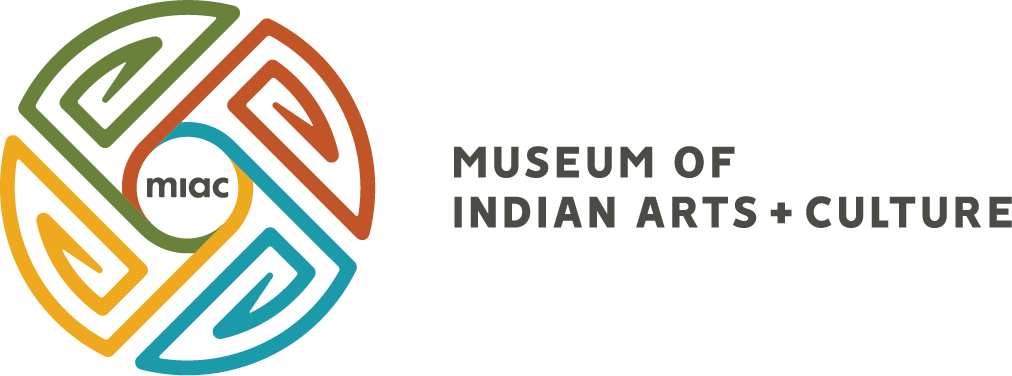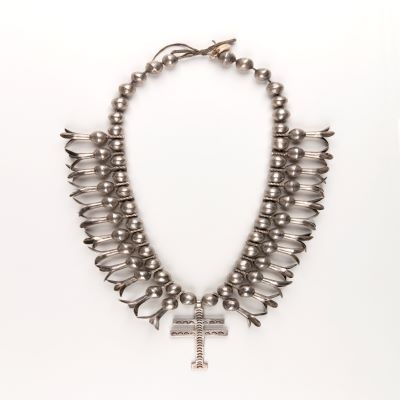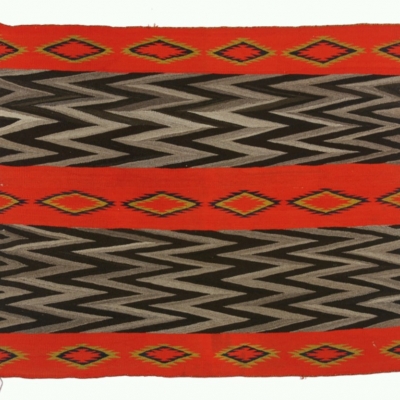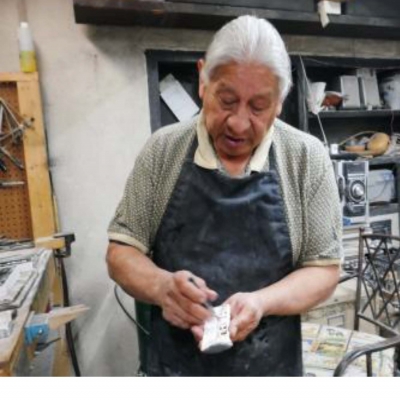Past Exhibitions
They Wove for Horses: Diné Saddle Blankets
March 25, 2012 through August 18, 2013
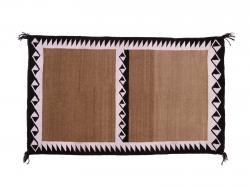
Empty Center Style Double Saddle Blanket
Tapestry-weave double saddle blanket, Empty Center style, 1920–40 Handspun natural wool warp and weft Dr. Edgar Lee Hewett Collection, courtesy of John and Linda Comstock and the Abigail Van Vleck Charitable Trust (45301/12)
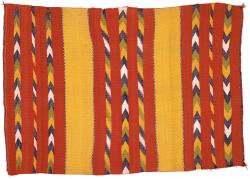
Tapestry-Weave Double Saddle Blanket
Tapestry-weave double saddle blanket, 1890–1910 Cotton warp, handspun wool weft and aniline dyes Gift of Florence Dibell Bartlett (36407/12)
They Wove for Horses: Diné Saddle Blankets opens at the Museum of Indian Arts and Culture on March 25, 2012 (on long-term view). The exhibition highlights both the textile-weaving proficiency of Diné weavers who produced complex saddle blankets for all occasions and the design skills of Diné silversmiths who created dazzling headstalls of silver and turquoise.
The saddle blankets on exhibit date from 1860 to 2002 and are arranged by weaving methods: tapestry weave; two-faced double weave; and twill weaves of diagonal, diamond, and herringbone patterns. By using a variety of warp and weft yarns—natural wool, cotton, angora mohair, unraveled bayeta, and Germantown—weavers added individuality to the everyday and fanciful tapestries they created for horses.
Horse trappings on exhibit reveal the great pride that Diné horsemen took in their horses and how they adorned them for ceremonial and social events. The Diné first learned how to manufacture saddles and bridles from neighboring cultures and their proficiency quickly surpassed that of their mentors. That devotion resonates still, as the horse remains a viable living force in Diné life today.

Diamond Twill-Weave Single Saddle Blanket
Diamond twill-weave single saddle blanket, 1890–1910 Cotton warp and three-ply Germantown yarn Gift of Henry Dendahl, courtesy of John and Linda Comstock and the Abigail Van Vleck Charitable Trust (26102/12)
